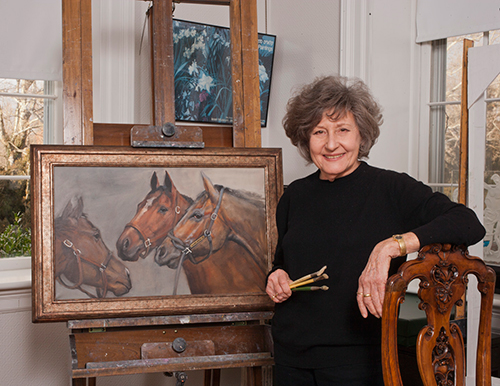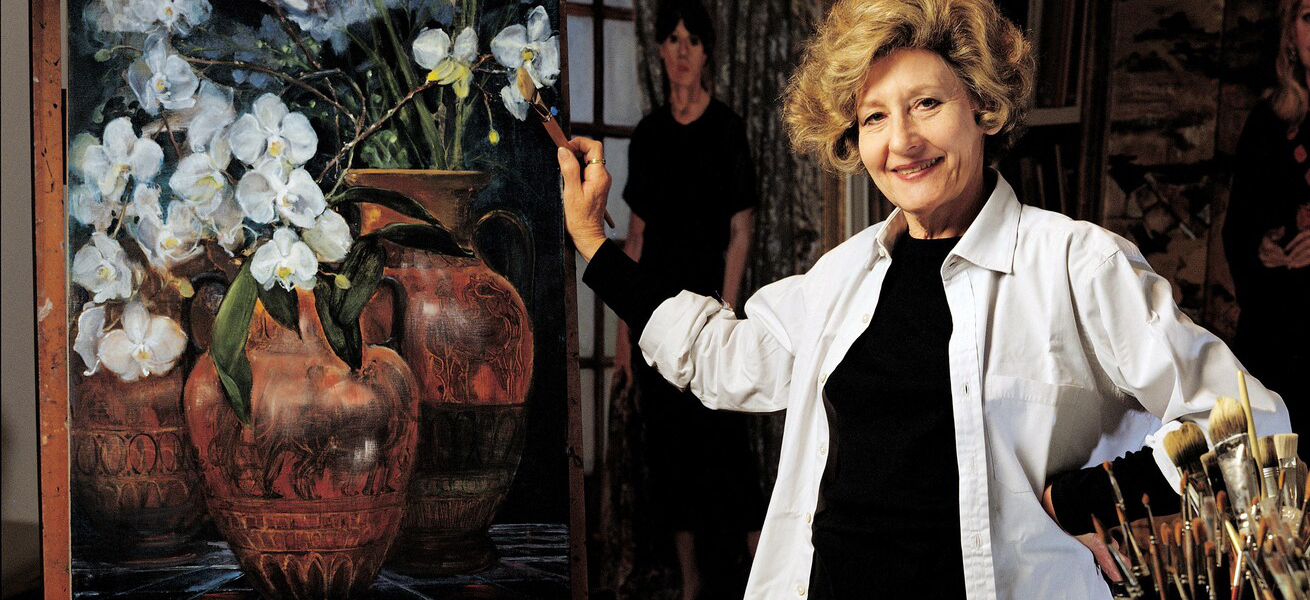Biography
Clarice Smith (1933-2021) was born, educated and resided in the Washington, DC area. She attended the University of Maryland and received a BA and MFA from the George Washington University, where she was also a member of the Art Department faculty from 1980-1987. In 2012, she was awarded an honorary Doctor of Fine Arts by the George Washington University to mark her distinguished career in the arts. In 2015, Clarice was awarded a Doctorate of Humane Letters from the University of Maryland.
She painted professionally for over 50 years, and has had numerous solo exhibitions in prestigious galleries in the United States and abroad, including London, Paris, Zurich, Maastricht and Jerusalem. She was previously represented by the Kennedy Galleries and is now represented by the Gerald Peters Gallery in New York City.
Clarice is best known as a traditional painter, trained through life drawing and works in oil. Her oeuvre includes portraits, florals, landscapes, still lifes and scenes of horses and sport. Recent museum exhibitions include solo shows at The National Museum of Women in the Arts, DC (2009); Virginia Museum of Fine Arts, Richmond (2011); (November 2013) at the New-York Historical Society, NY; the National Sporting Library and Museum, Middleburg, VA (2014); and the Kreeger Museum, Washington, DC (Oct. 7, 2016 to Dec. 30, 2016). Clarice collaborated with metal sculptor Albert Paley on a decorative screen entitled Triptych, currently on display and in the permanent collection of the Orlando Museum of Art.
Smith expanded her artistic endeavors to include working with stained glass. She was commissioned by The New York Historical to create three works in that media; Floral, Herons in Flight, and Suffragettes, all with Venturella Studio.
Inspiration
From the time she was a young girl Clarice Smith was compelled to draw what she saw. This compulsion grew to wanting to also convey the mood or feeling she felt from a particular scene, big or small. She was inspired by painters like James McNeil Whistler, Manet, and John Singer Sargent but her inner inspiration came from another place.
I compose paintings from the patterns I see in people, places and things; striving to paint the moods they inspire.”

Photo credits: John T. Consoli, University of Maryland
